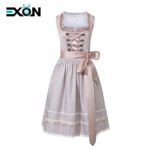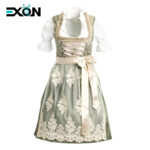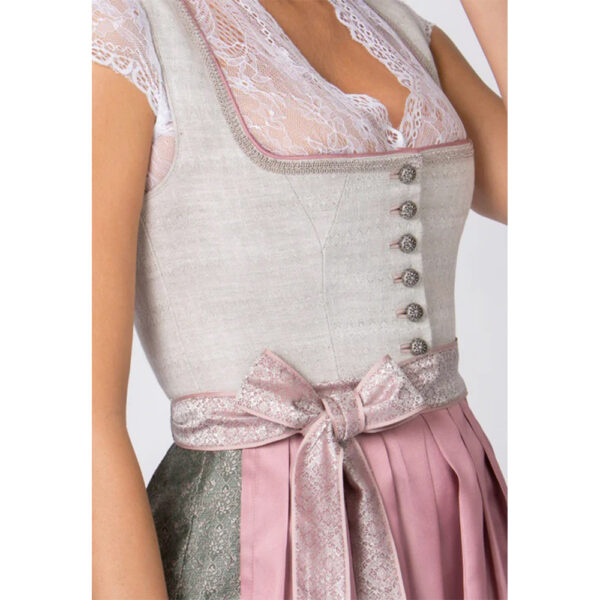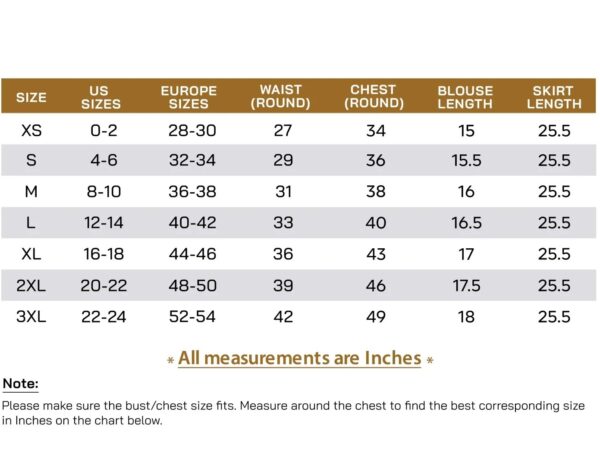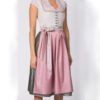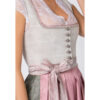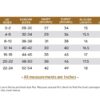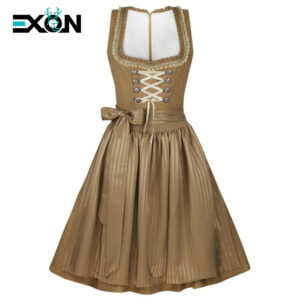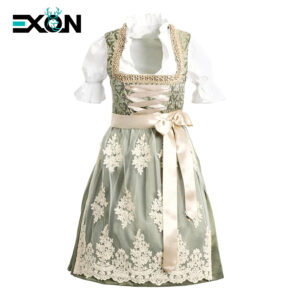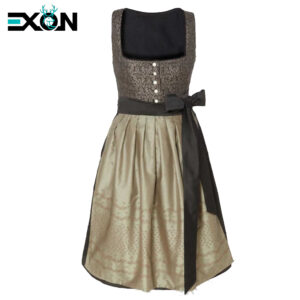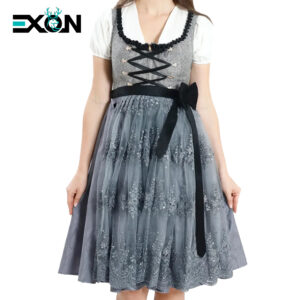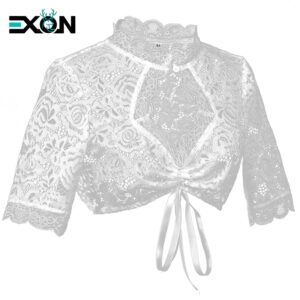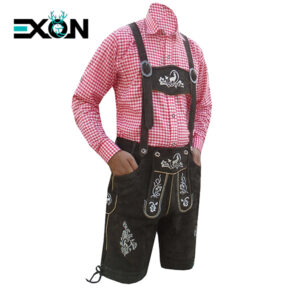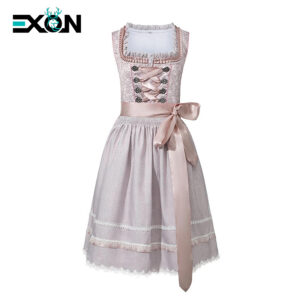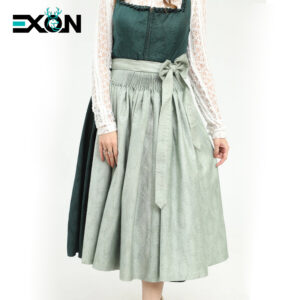Description
A Deep Dive into the Icon of Alpine Heritage
The Bavarian dirndl is far more than a picturesque folk costume donned for Oktoberfest; it is a profound symbol of cultural identity, a masterpiece of tailoring, and a vibrant, living tradition that continues to evolve.
Rooted in Practicality: The Humble Beginning
The dirndl’s story begins not in Bavarian festival tents, but in the rugged, pastoral landscapes of the Alpine regions of Germany, Austria, Switzerland, and South Tyrol.
Its name is derived from the Bavarian-Austrian word “Dirndl,” a diminutive of “Dern,” which originally meant “young woman” or “maid.” In the 19th century, it was the standard working Bavarian dress for farm girls and domestic servants—a uniform designed for durability and functionality.
This original Arbeit dirndl (work dirndl) was crafted from robust, homespun fabrics like linen or wool. Its design was ingeniously practical: a close-fitting bodice provided support for physical labor,
a blouse allowed for modesty and breathability, a full skirt enabled freedom of movement for climbing hills and milking cows, and an apron protected the dress from dirt and wear.
Anatomy of an Icon: Deconstructing the Ensemble
A true dirndl is a sartorial puzzle of several key components, each with its own purpose and history:
-
The Blouse (Dirndlbluse): The foundation of the outfit. Traditionally white and made of cotton or lace, it features characteristic puffed sleeves (often gathered at the forearm or wrist) and a neckline that sits neatly under the bodice. Modern variations include off-the-shoulder, sleeveless, and V-neck designs.
-
The Dress (Klein): This is the core of the ensemble, consisting of two parts:
-
The Bodice (Moeder or Libel): The heart of the dirndl. This tightly fitted, often boned corset-like top is designed to sculpt and flatter the figure, creating a defined waist and accentuating the bust. It is typically the most decorated element
-
, featuring embroidery, lace-up fronts (with either laces or a decorative Hakenleiste, a hook-and-eye panel), ornate buttons, or edelweiss pins.
-
The Skirt (Rock): Characterized by its generous fullness and volume, the skirt is designed to swing gracefully when dancing or walking. Traditional lengths fall just below the knee, though modern interpretations vary widely.
-
-
The Apron (Schurz): Far from merely decorative, the Bavarian apron is the final, crucial layer.
-
It is always tied over the skirt, and the placement of the bow carries a secret language of its own—a playful code of relationship status: a bow tied on the right side signals that the wearer is taken; on the left, she is single; in the center, she is a widow; and a bow tied in the back traditionally indicates a waitress or a child.

